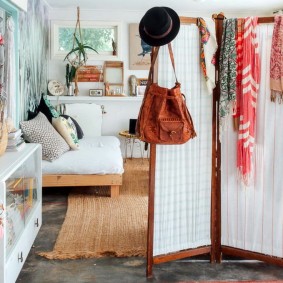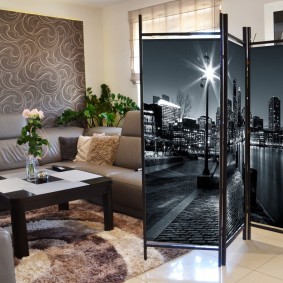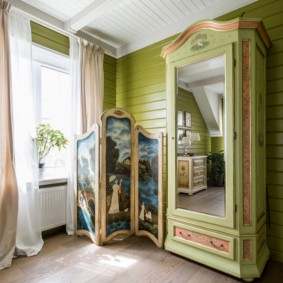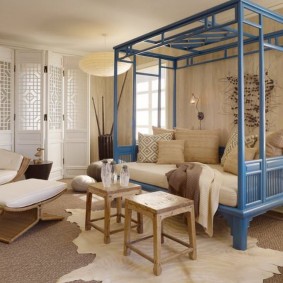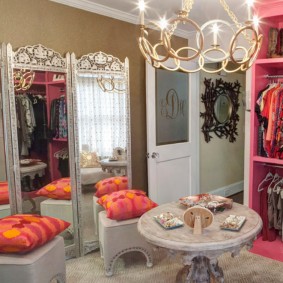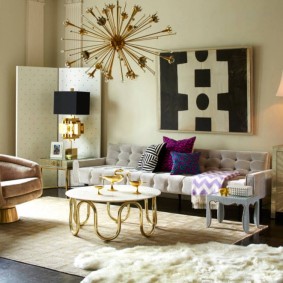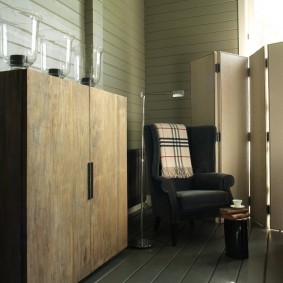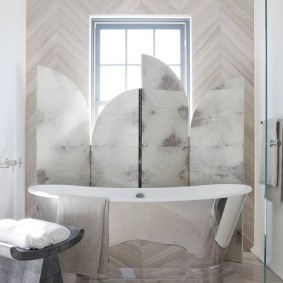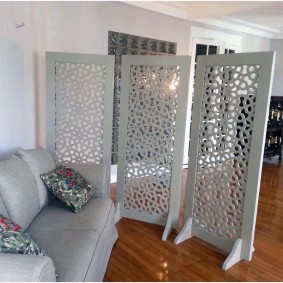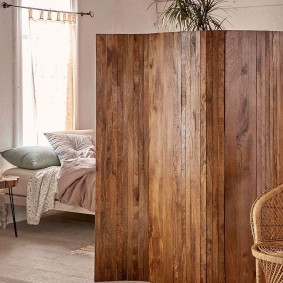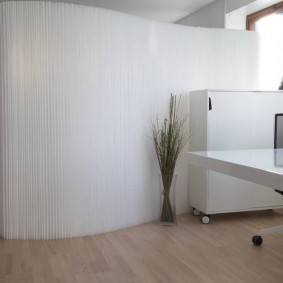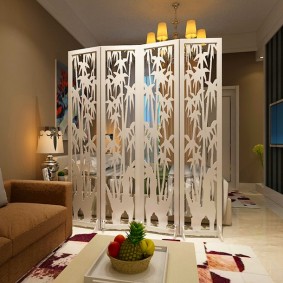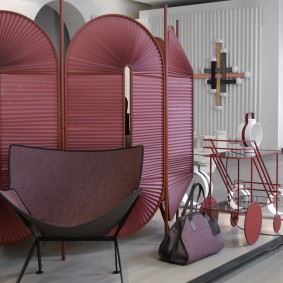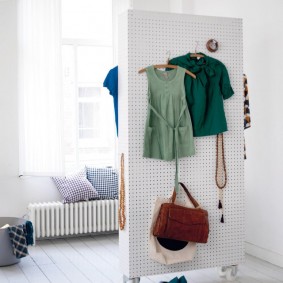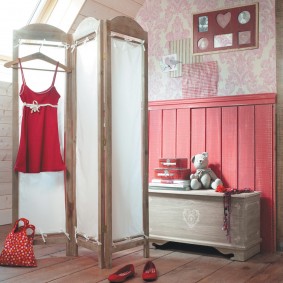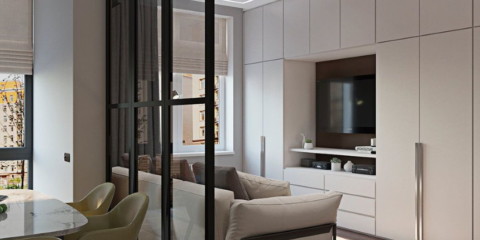 Interior
Options for finishing corners in the design of apartments
Interior
Options for finishing corners in the design of apartments
In modern homes, the screen is not used often in interior decoration. Although in the 19th century this little thing, which came from Europe to the interiors of Russian houses, was very in demand, but not as decoration, but having purely practical significance, it served as a division of the room into several zones.
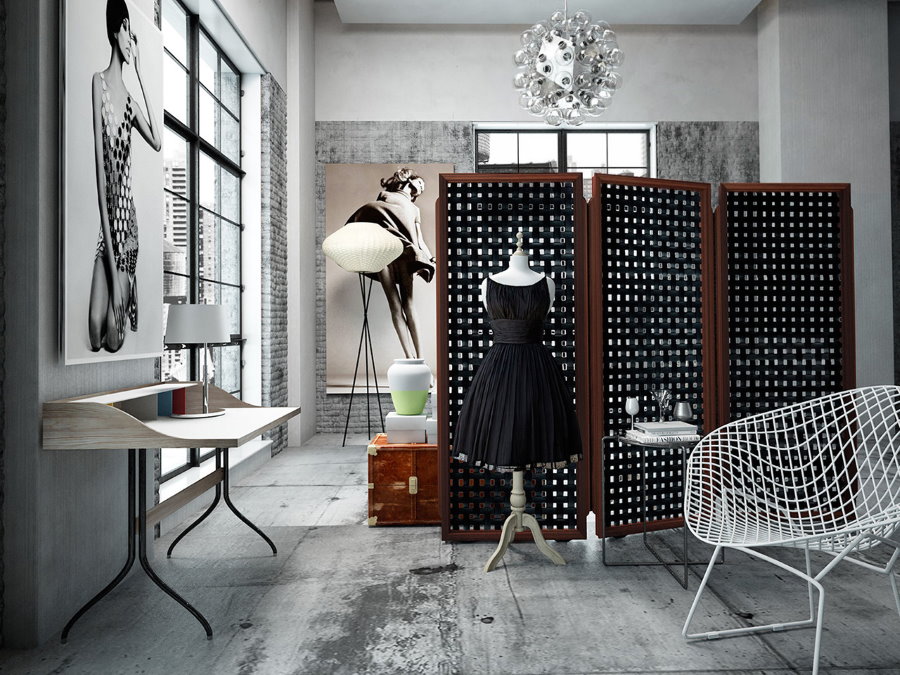
A well-chosen screen will be an elegant addition to the interior of any room
The screen is quite an ancient invention, it is believed that it appeared in the 7th century AD, in China. In those days, the inhabitants of the Celestial Empire believed that the screen installed at the entrance to the dwelling would be an obstacle to the penetration of an evil spirit. Silk decorated with hand embroidery or artistic painting was used for the manufacture of sashes. Further, this piece of furniture gradually appeared in other countries, first in Japan, and then they began to be found in Europe, having gained immense popularity here.
In general, the purpose of the folding partition can be diverse, for example, as a divider for children in the sleeping area and the game room. Several partitions will allow you to successfully hide from prying eyes an open house terrace for the period of the warm season. In addition, it will provide protection from the scorching sun, drafts or rain. In this case, mobile curtains with a floral pattern will become appropriate. In the hot summer, they will create the illusion of a cool oasis, especially in combination with a small fountain or a dynamic picture with a waterfall. The ability, with the onset of cold weather, to clean the screens for storage in a closed room will significantly increase their life.
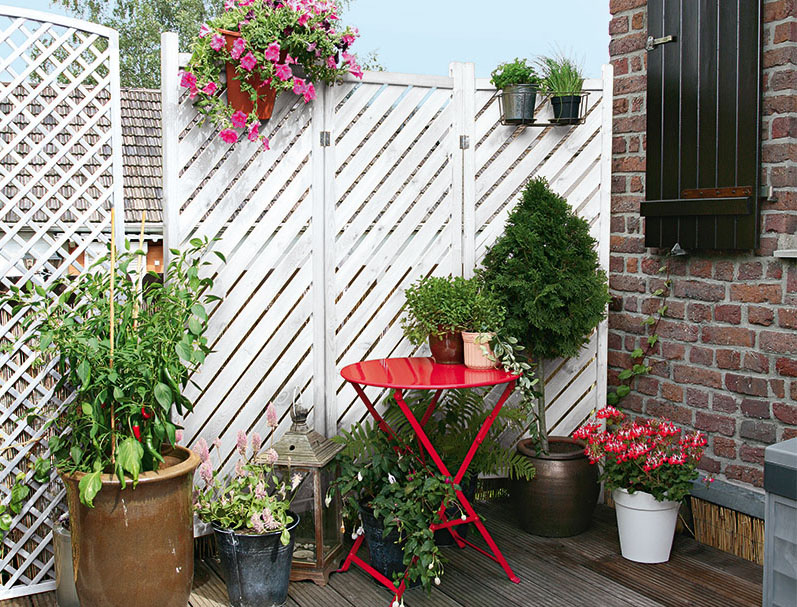
A portable screen is the easiest and fastest way to isolate oneself from prying eyes in a summer cottage.
A screen cannot replace a full-fledged partition in a room; it creates only the appearance of privacy, but nevertheless has a lot of advantages:
- No special installation required.
- In order to change the situation in the room, you just need to rearrange it in another place.
- Due to its small size, when folded it is perfectly stored in a closet, pantry or on the balcony.
Types of screen partition models
Content
All human beings are social and a big friendly family is what every person dreams of. But what if a large family is forced to live in a small apartment? After all, the need for solitude sometimes arises in any person. Installing capital partitions in a room is not only expensive, but also quite troublesome, because the construction of any walls must be agreed with the BTI. And the need for these walls may be temporary, for example, during the period when guests come to the house.

A screen can definitely be considered both a piece of furniture and a decorative element.
It is possible to effectively solve the problem of zoning a room with the help of a well-chosen screen of the partition for the room, while it will not only help with the division into zones, but also will update the annoying atmosphere. According to the design characteristics, mobile partitions can be divided into:
- folding (casement);
- sliding;
- screen;
- flexible.
Folding or Casement
A folding screen due to its practicality and ease of use is the most common type of temporary partitions. The design is quite stable and allows the use of such a screen even as a clothes hanger. Sashes can be continuous, or with division into sections - such models allow you to equip the screen with shelves for flowers or any haberdashery little things.

With the help of a folding screen, you can easily control the space in the room
Folding models are time-tested - this is the very first, and earlier the only design of screens. Depending on the material used for the manufacture and the intended style, such a product will harmoniously fit into any interior, from classic to hi-tech.
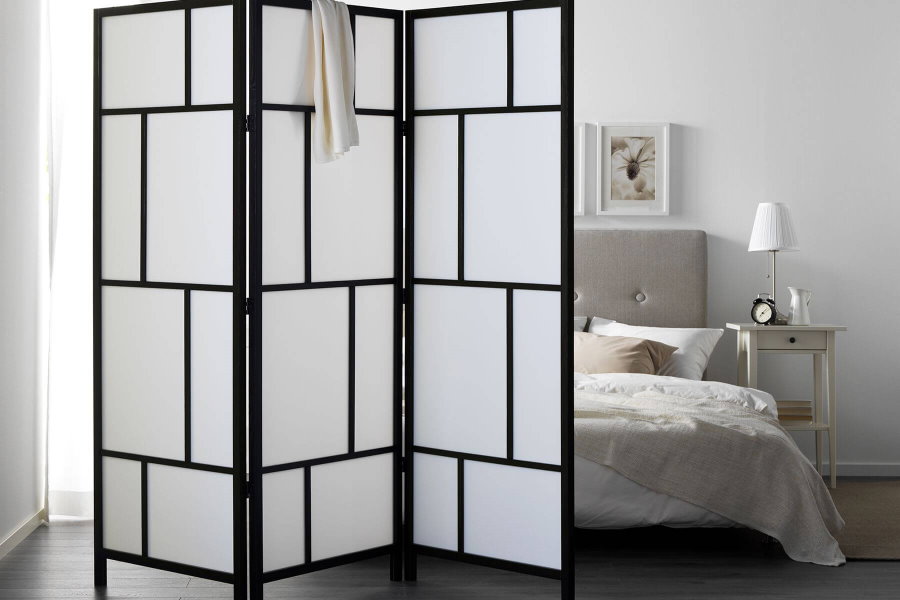
The classic folding model consists of three sections interconnected by loops
The size of the septum, as a rule, is not higher than the height of an adult, the width of each leaf is approximately 60 cm. This size makes it possible, without cluttering up the space, to create a temporary wall.
Sliding
The modern sliding wardrobe system is the prototype of a sliding screen. This design is very convenient - the shutters are easily movable with wheels. The product can be of any size, up to the ceiling. But most often such partitions are used in bathrooms.

Sliding partition screen protects the bathroom space from water splashes
There are also unusually attractive floor screens for a room decorated in country style or Provence, assembled from wooden carved battens, fastened together by metal moving elements. Such partitions will become a worthy accent element in the interior.
Screen
The screen screen is most often used in offices, cafes and medical institutions. But in residential premises, it finds its application. It is convenient to install it on the windowsills of the southern rooms on hot days in the case when the owners of the room do not want to use permanent blinds on the windows. Such a screen can be equipped with stand legs or attached to the floor or walls using special fasteners.

Screen screens do not stack, but often have wheels to move around the room
Soft screens that are suspended from the ceiling are also used. This option is convenient if it is necessary during the daytime sleep of the child in the common room to isolate the crib from sunlight.
Flexible
A flexible screen is a relatively new invention for indoor use, but in rural areas flexible cane mats have been used for a long time as temporary partitions, fences. Now such models are made both from modern materials (plastic, metal), and from natural ones - rattan, willow rods and others.

A flexible screen made of thin bamboo - this canvas can take the most bizarre forms, and if necessary, easily rolled up
Examples of using screen partitions to visually increase the space in a room
A large and spacious apartment, unfortunately, is not accessible to everyone, much more often the studio or an ordinary one-room apartment becomes the choice of an average family. But even in an insufficiently large room, using various design techniques, it is possible to create the illusion of a spacious room.

When choosing a screen, it is important to consider the dimensions of the room where it will stand
Among other methods, competent selection and arrangement of screens can play a role in creating such optical illusion. Light partitions are the best suited for this purpose, since it is light tones that add volume, visually increasing both the height and the width of the room. It is recommended to use soft, light textiles as the material for the manufacture of the screen, which will also bring its share of comfort to the room.To visually increase the ceiling height in your choice, it is better to abandon the model with horizontal lines.
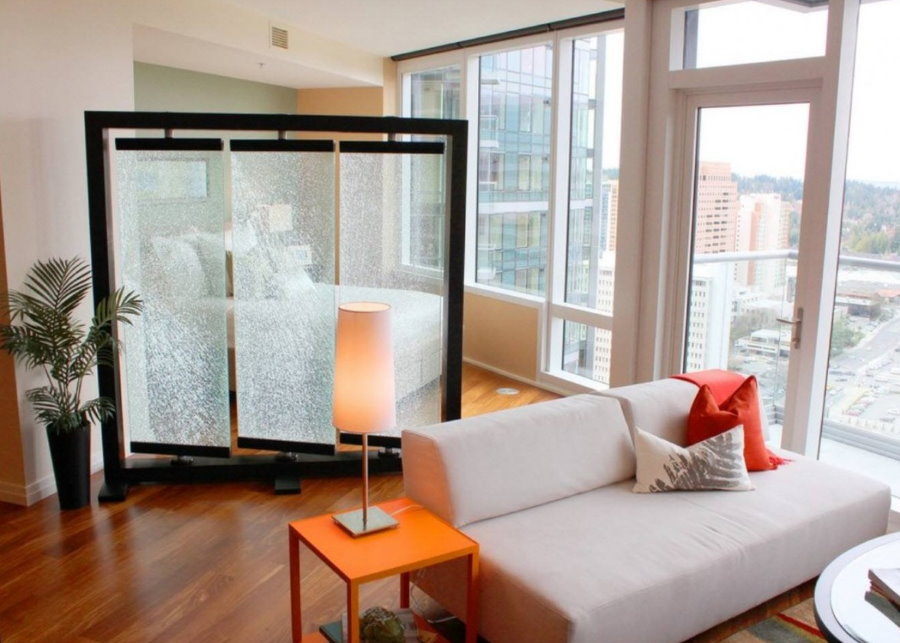
For a small room it is better to purchase a light screen with translucent fabrics
You can use a screen with a geometric pattern, which paired with a plain wall or a second plain screen will give a stunning effect of "unfolded" space.

An unusual screen that acts as a screen and is simultaneously used to store various items
The use of mirrors is perhaps the most effective technique for creating optical illusions. Therefore, it is logical to use a mirror screen to expand the space. It must be placed strictly vertically, otherwise the necessary effect will not work. In order for such a screen to last longer, it is necessary to install it so that direct sunlight does not fall on the mirror surface, as this leads to its dimming and damage. Correctly placing the lamps in front of the mirrors, you can enhance their effect, as well as add additional volume to the room.

Mirror screen in the interior of a small bedroom
Screen manufacturing materials
If you turn to search engines with a request "what can be made into a screen", in response we get a huge variety of very diverse options. In order for the screen to become an appropriate element of the interior, it is advisable to choose the material for its manufacture, starting from the design of the room for which it is intended.

Stylish screen with leather upholstery and metal rivets
Wooden screens
Wooden screens are universal for any room. They are quite durable and very easy to care for. For their manufacture, you can use any tree.

Blank wooden screen in retro style

Luxury model with decorative carvings
Carved wooden screens look very impressive. In order to make them more closed, it is enough to fix a fabric, paper or plastic cloth on the back wall.

A lightweight version of wooden models are screens made of willow or rattan rods woven on a rack frame
Metal
Forged metal screens are more a decorative than a functional element in the interior. The openwork product seems light, but having a sufficiently heavy weight when moving can damage the floor covering.
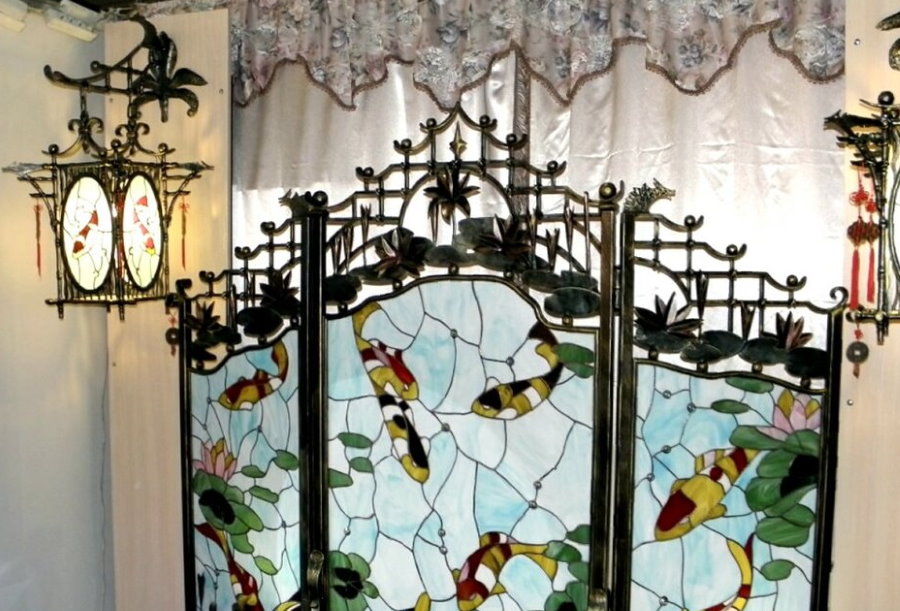
A metal screen with forged elements can be decorated with stained glass and, as a whole, is a real work of art
A metal screen for a room with shelves on which photos are placed in wooden frames, flowers in clay pots, books is more practical. Such a model, rather, performs the function of not a partition, but, whatnot.

Shelf screen - a popular solution for placing indoor flowers
Other materials
In rooms with high humidity it is better to use plastic screens. In the combined bathroom, such a screen will hide the toilet. The popular sliding plastic curtain on the bathroom turns it into a shower cabin.

Lightweight models made of durable plastic are designed to be installed directly on the side of the bathtub
Such screens are easy to clean, and therefore, with little effort, they will always have a neat and almost new look. With a careful attitude to them, plastic screens can be very durable.
Partition screens in various rooms

An inexpensive screen with photo printing on thick cardboard will be the highlight of the interior of the room for any purpose
In the bedroom
The interior of a modern classic bedroom harmoniously blends in with a light, elegant structure made of carved wood, used as a corner for changing clothes. A large floor mirror and a hanger can be hidden behind it. A screen, hiding home clothes will ensure order in the room.In the bedroom, a partition decorated with stained glass or any other material that transmits light, in combination with a rear light source, can be used as a spectacular lamp.

The screen will harmoniously fit into the bedroom interior if the design of the partition finds a response in any other elements of the room’s interior.
A screen for a bedroom intended for parents with children can be made in a two-sided version, on the one hand it is decorated with bright children's plots, and on the other, a calm background.
In the living room
In the living room, a screen can be used to visually expand the space, if mirror panels are used to make it. Placed in front of her compositions of indoor flowers will create the impression of a large greenhouse.
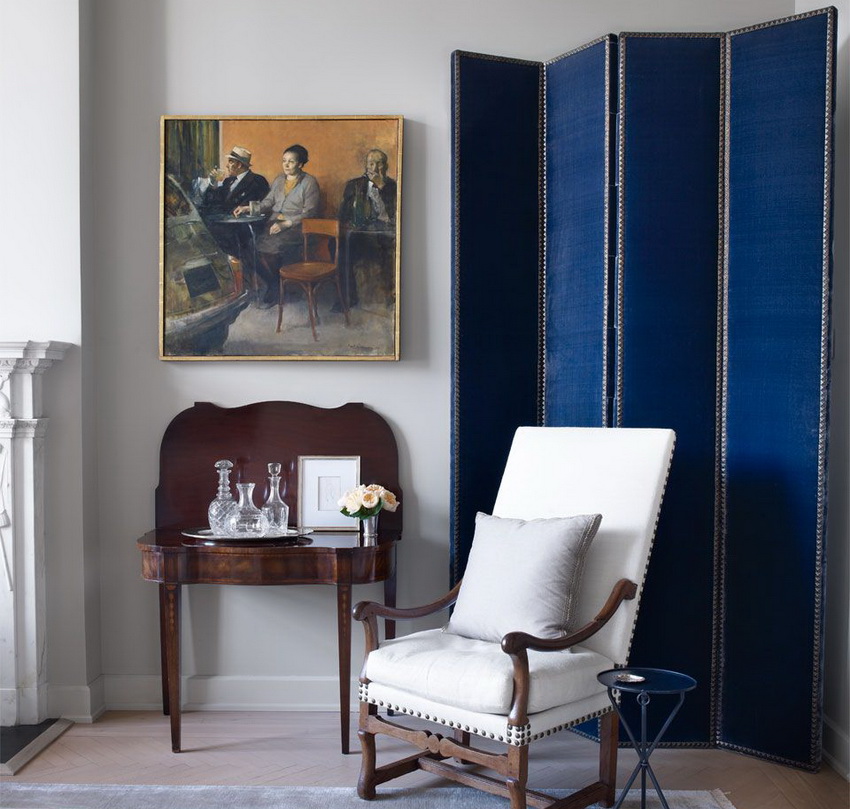
The appearance of the screen should fit the general interior of the living room
Using the sliding screen of the partition for the living room, you can divide into functional areas - to separate the relaxation area from the dining, working or sleeping area, if necessary.
In rooms for other purposes
Using a forged metal screen in the kitchen will create a cozy dining area, separated from the cooking area. On such a screen, it is possible to provide rings in which the flower pots with curly flowers will be located, this will soften the rough metal and create an atmosphere of beauty and peace.

Openwork screen in the interior of a light Spanish-style kitchen
A screen can be used as a partition in a house with stairs where young children live. Such a fence will not take up much space, but equipped with a special locking mechanism, which can only be opened by an adult, will ensure the safety of the kids, blocking their independent access to the stairs.

Thanks to the screen-barrier, a small child will not be able to get into a danger zone for him
If the nursery is intended for two children, especially heterosexual, mobile screens for zoning the space in the room are simply necessary. In addition to creating secluded zones, children themselves will find a lot of additional uses for the temporary partition. This may be the stage of a puppet theater or the curtain of a concert hall. If parents want to show their imagination and make a screen on their own, they will be able to supply it with a mass of pockets for their favorite children's toys and various trifles, small windows and other things.

Using the originally designed screen in the children's room, you can create a fabulous atmosphere
In the nursery for babies, it is necessary to use extremely durable and, preferably, rigidly fixed constructions that the child is not able to knock over and injure themselves.
Summing up, we can conclude that the screen is a very convenient, useful and multifunctional thing, indispensable in small rooms that need to be divided. It is also a good way to complete the original interior with an interesting element.
Video: DIY screen made of plastic pipes
